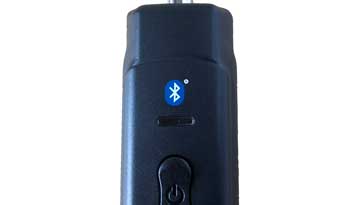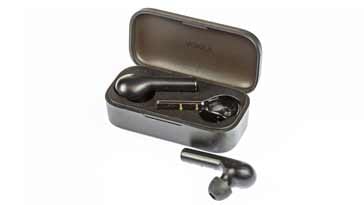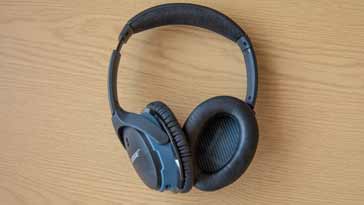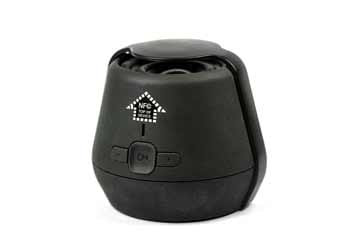What is Bluetooth Technology: basics & overview
Bluetooth is a short range wireless communication system providing connectivity for many electronic items
Bluetooth Tutorial / Summary Includes:
Bluetooth technology basics
How Bluetooth works
Bluetooth Classic: how it works
Bluetooth Low Energy: how it works
File transfer
Bluetooth profiles
Pairing & networking
Security
Bluetooth 2 EDR
How to connect Bluetooth devices
Bluetooth technology is well established and is able to provide wireless connectivity for an ever increasing number of items from Bluetooth wireless headphones to mobile phone and laptop short range connectivity and wireless computer mice to many other devices requiring short range wireless connectivity.
Bluetooth technology has progressed significantly and has been expanded to provide not only the traditional short range audio streaming, to applications like mesh connectivity for IoT and M2M communications.

Run under the auspices of the Bluetooth SIG which develops the Bluetooth standards, Bluetooth has developed to provide faster speeds, greater flexibility and far more capability.
Bluetooth applications
Bluetooth has gained a really significant position in the wireless communications scene. There are many Bluetooth enabled devices that form part of everyday living.
Headphones: Bluetooth is a form of communications used for the variety of wireless headphones, earphones, earbuds, etc that are seen these days. People travelling on the trains, running, in coffee shops and a variety of other places have become used to using these wireless earbuds and wireless earpieces that have the advantage of not having wires that can become tangled.
Bluetooth speakers: Bluetooth speakers can be very convenient when anyone wants to stream music or other audio from a phone. The Bluetooth speakers have grown in popularity and many offer exceedingly good performance, enabling music to be listened to in many areas which might not otherwise be possible.
Watches: Many smart watches are now available that connect to phones enabling many functions to be accessed via the watch. The connectivity is typically provided by Bluetooth.
In-car connectivity: Many people like to have their phones linked to the in-car entertainment systems. These have grow increasingly advanced over the years enabling many functions to be linked. For these, the wireless connectivity is provided by Bluetooth.
IoT devices: The Internet of Things, IoT is an area that is rapidly growing. Bluetooth has advanced in recent years sot hat it now has considerable capability for this area.
Of course, these are just four popular examples from a vast selection of applications ranging from audio streaming, to control of cameras, gimbals, and many of small devices to their use in the Interent of Things where Bluetooth is gaining a significant foothold for very many different electronic gadgets and situations.
Bluetooth development
The concept of Bluetooth dates back to 1994 with the idea that it would be useful to have wireless connections for items like headphones, earphones, etc.
Work started in 1998 with five companies forming the Bluetooth SIG to manage the creation and update of the standards, etc.
It took until July 1999 for the first version of the standard to be released, and this had a number of issues, so the first useable release occurred in 2001.
The name Bluetooth
The name of the Bluetooth standard originates from the Danish king Harald Blåtand. He was king of Denmark between 940 and 981 AD.
Blåtand’s name translates as "Blue Tooth" and this was used as his nickname and resulted from the fact that he had a tooth that was bad and had gone “Blue.”
A brave warrior, Blåtand’s main achievement was that of uniting Denmark under the banner of Christianity, and then uniting it with Norway a country he had conquered.
The Bluetooth standard was named after him because Bluetooth endeavours to unite personal computing and telecommunications devices and this has similarities with Blåtand uniting Denmark and then Denmark with Norway .

Bluetooth standard releases
There have been many releases of the Bluetooth standard as updates have been made to ensure it keeps pace with the current technology and the needs of the users.
| Bluetooth Standard Releases & Timeline |
||
|---|---|---|
| Bluetooth standard version |
Release date | Key features of version |
| 1.0 | July 1999 | Draft version of the Bluetooth standard |
| 1.0a | July 1999 | First published version of the Bluetooth standard |
| 1.0b | Dec 1999 | Small updates to cure minor problems and issues |
| 1.0b + CE | Nov 2000 | Critical Errata added to issue 1.0b of the Bluetooth standard |
| 1.1 | February 2001 | First useable release. It was used by the IEEE for their standard IEEE 802.15.1 - 2002. |
| 1.2 | Nov 2003 | New facilities added including frequency hopping and eSCO for improved voice performance. Was released by the IEEE as IEEE 802.15.1 - 2005. This was the last version issued by IEEE. Version 1 of Bluetooth is often known as Basic Rate, BR. |
| 2.0 | Nov 2004 | Added the enhanced data rate, EDR to increase the throughput to 3.0 Mbps raw data rate. |
| 2.1 | July 2007 | Secure simple pairing introduced to improve security. |
| 3.0 | Apr 2009 | Sometimes known as High Speed, HS. It added IEEE 802.11 as a high speed channel to increase the data rate to 24 Mbps |
| 4.0 | Dec 2009 | This introduced Bluetooth Low Energy, BLE formerly known as Wibree. It maintained the maximum transfer rate of 24 Mbps. |
| 4.1 | 2013 | Reduced power consumption and enabled smaller devices to be developed. |
| 4.2 | 2014 | Introduced the ability to cary IPv6 data enabling direct connection tot he Internet. |
| 5.0 | 2016 | Doubled transfer data rate up to 50Mbps, quadrupled range up to 240 metres, strengthened security, and improved the ability to be used for IoT with low current consumption, etc. |
| 5.1 | 2019 | Introduced the ability to determine the location of devices, and identify from which direction a signal was coming. |
| 5.2 | 2020 | Improved sound quality and energy efficiency. Used a new CODEC: Low Complexity Communication Codec, LC3. Allowed audio to be sent to multiple devices. |
| 5.3 | 2022 | A variety of improvements to give lower power consumption, less affects from interference, better security, more reliable connections. |
It can be seen from this that the standard has moved forwards, improving the capabilities of Bluetooth each time to meet the growing needs and to invest in future applications.

The technology behind Bluetooth Low Energy is rather different to that of the previous versions. The older versions are called Classic Bluetooth, whereas the others are often referred to as Low Energy or Bluetooth Low Energy, BLE.
| Classic and Low Energy Bluetooth |
|
|---|---|
| Bluetooth Version | Classic vs Low Energy |
| Bluetooth 1 | Classic |
| Bluetooth 2 | Classic |
| Bluetooth 3 | Classic |
| Bluetooth 4 | Low Energy |
| Bluetooth 5 | Low Energy |
Versions from Bluetooth V2.1 including Basic Rate are valid. Also the development of high-speed mode in Bluetooth 3 has ceased, but the specification remains valid.
The versions up to and including V3 are known as Bluetooth Classic and from V4 on as Bluetooth Low Energy. Bluetooth Low Energy, BLE is has been developed for high efficiency requirements as needed in devices running for long timespans on small current intake.
As compatibility in many areas is important, many daya to day devices may support both modes and are referred to as Dual Mode. However some devices that are used for areas where battery life, etc is really important, and where they are likely to remain paired to one set of devices, may only operate in BLE mode

Bluetooth basics
Bluetooth is a form of low power wireless connectivity that operates within the 2.4 GHz licence free band to enable a variety of devices to be connected together without the need for wireless.
As the 2.4 GHz spectrum is shared with everything from Wi-Fi to microwave ovens and a huge number of other devices, there can be a lot of interference.
To overcome this, Bluetooth uses a technique called frequency hopping. The concept was invented by famous Hollywood star, Hedy Lamar in the 1940s as a means of overcoming jamming. However it is equally applicable to applications such as Bluetooth.
The technique involves the radio hopping over a number of pre-determined channels in a pseudo-random order.
In this way it spends only a short time on each channel, and therefor if interference exists on one channel, it will only remain there for a short time before moving onto the next, which is likely to be free from interference.
By having a pseudo-random sequence, it means that two devices in relatively close proximity will not follow the same sequence at the same time, thereby permanently stopping communication.
Although Bluetooth Classic and Bluetooth Low Energy, BLE use the same basic principles, they have differing modes of operation;
Bluetooth Classic: The Bluetooth Classic radio, streams data over 79 channels in the 2.4GHz unlicensed frequency band.
Supporting point-to-point device communication, Bluetooth Classic is mainly used to enable wireless audio streaming and is the standard radio protocol behind many audio streaming devices including wireless speakers, headphones, and in-car entertainment systems, as well as a number of other items.
Bluetooth Low Energy: Bluetooth Low Energy, BLE is designed for very low power operation. Again it uses frequency hopping, but only over 40 channels in the 2.4GHz frequency band.
The BLE radio provides a large amount of flexibility to design a variety of products with differing connectivity needs. BLE supports multiple communication topologies, including point-to-point, broadcast and mesh networking. This enables Bluetooth to support the creation of reliable, large-scale device networks.
Although Bluetooth was used for just data communications, BLE now includes functionality to support device positioning for the increasing demand for high accuracy indoor location services. In fact the latest versions of BLE now include features that enable one device to determine the presence, distance, and direction of another device.
Bluetooth is now a well established and integral element of the wireless communications scene. It built up a niche for audio streaming, but the latest releases mean that it can be used for very many more applications, particularly associated with the Internet of Things, IoT.
 Written by Ian Poole .
Written by Ian Poole .
Experienced electronics engineer and author.
Wireless & Wired Connectivity Topics:
Mobile Communications basics
2G GSM
3G UMTS
4G LTE
5G
Wi-Fi
Bluetooth
IEEE 802.15.4
DECT cordless phones
Networking fundamentals
What is the Cloud
Ethernet
Serial data
USB
LoRa
VoIP
SDN
NFV
SD-WAN
Return to Wireless & Wired Connectivity



